02 – 03 / 06 / 2022
Report by Spolka
This text is about the Educators. Group of invited professionals in formal and informal education of art, design, architecture, film and art theory, to discuss how we can co-create climate care approaches in our work.
You can find here:
the proposals about climate-care approaches and the process how they were created
the toolbox (for you and other educators) to implement right away if you want to adapt climate-care approach to your practice
challenges and plans to support with policies (for policy makers and supportive organizations)
Arriving to the exhibition on (sustainable) materials (Materialisti, Slovak Design Centre https://scd.sk/vystava/materialisti/#), everybody looks curiously at each other. This is where it starts: the Burning Unconference takes place in the Slovak Design Centre in Bratislava and at the Impact Academy (Villa Schapira, which is part of the Academy of Fine Arts in Vienna). It was promoted that we will get to know each other and that we will have to put together plans, to implement in our art, design, architecture, artistic and other creative fields education system. Being from universities, high school, cultural institutions and other related fields is sometimes considered a predisposal for openness and political engagement in ecological activities. But this does not mean that we are all aligned and united in our languages and goals in learning and teaching. This is the challenge that will come first.
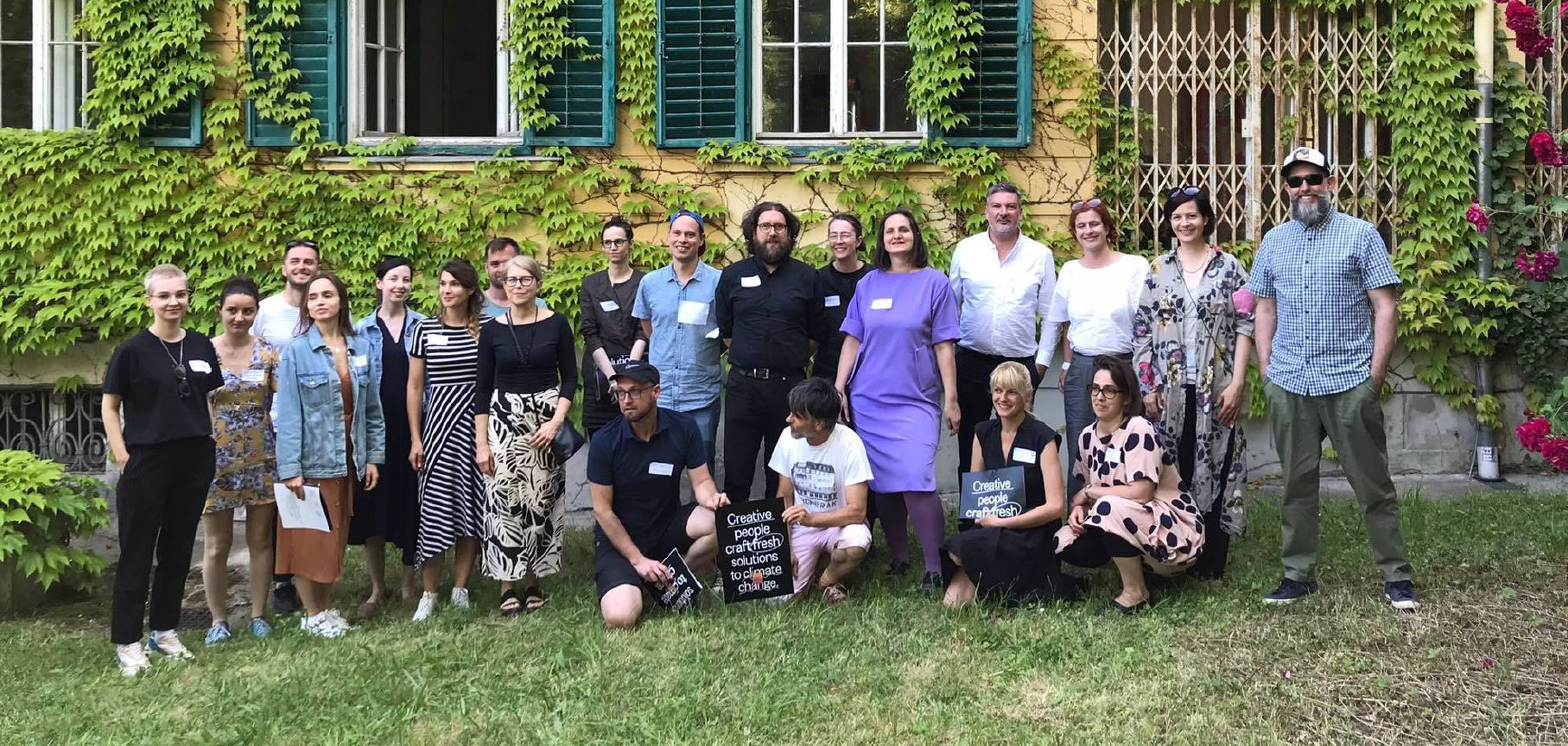
Firstly, Michael Prytula gives a hybrid lecture on new education approaches in connection to interdisciplinary practice in the program Urban Futures. We are sitting in a large room around a huge table made of solid wood – one of the remnants of the discarded furniture of the former Slovak Television building, which the design centre managed to save. Our attention is focused on the screen with the lecturer, which only emphasizes the charm of the room and its furnishings. Prytula's input from different educational backgrounds – one of urban and regional planning – gives opportunity to open up to challenges of our own learning and teaching. Professionals need to learn continuously, interdisciplinary teams form combined projects and bring innovations. How do we design learning so that it brings us to the world we need to change? Who organizes it and how?
Link to the recorded lecture:
https://www.youtube.com/watch?v=dvX8RYOobCg
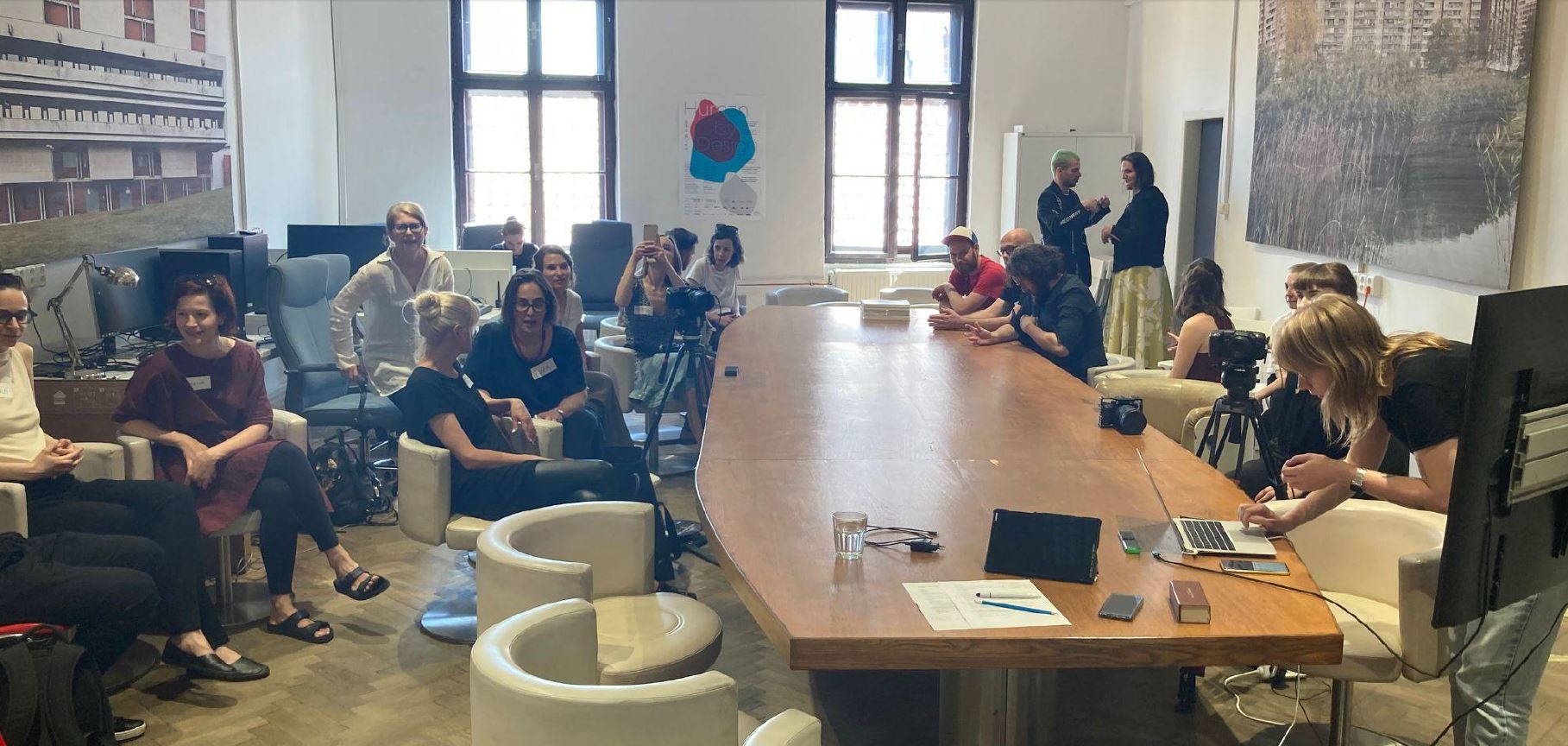
After the lecture and coffee break, we the Educators are asked to become observants of the environment. We go down the stairs into the courtyard of the former barracks, which is now mainly a parking lot hidden between the buildings. The weather is hot and we stand quietly in the courtyard and draw or sketch our surroundings. Taking our expertise with us to the observations we draw maps and potentials of this space from what we see. The maps are then very personal, from the view of our discipline and experience. We come together in groups and go further discussing commonalities and differences in the viewpoints. In the end, we leave the space meeting the goal of the day 1: having a good grasp of a notion of who We the Educators are, knowledge of our mutual interdisciplinary starting points and ideas.
 Educators with the Villa
Educators with the VillaOn Day 2 the group moves to Vienna, to the Villa Schapira which is used by the Academy of Fine Arts Vienna for the Impact Academy. Encounter with the house is significant and we experience thrill. The house is 100 years old and spacious, has many small rooms equipped with large windows into the garden with a mulberry tree. It reminds us of the climate-care practice that is necessary for its survival and the maintenance of its old components. It provides us wonderful relief from the sun and a feeling of calm and space to think.
Georg Rusegger, Director of Impact Academy (Academy of Fine Arts Vienna) presents the activities at the space and the artistic and creative use of the Villa for vocational training and education, studios in residence and as a training facility supporting the SDGs (Sustainable Development Goals), climate care, sustainability projects and dealing with societal challenges. It provides us space for the day's goal: Unconference – a participant-driven meeting that we chose because it is a format avoiding the hierarchical, frontal and inflexible aspects of a conventional conference. It follows the path of care and needs and therefore answers the questions that we ask ourselves. We aimed at identifying the questions and themes that 'burn' us in the relationship between the climate crisis and education.
Climate education learns from nature
When we learn from nature blooming but also from the natural catastrophes, we realize that design solutions might not be the best. Maybe we need to leave the things as they are and let the 'nature, be the leader'.
Climate education changes the education system
From early education to life-long learning, climate needs to be present. We need to intensify re-learning and learn in the process as professionals, and implement green critical thinking. Climate questions should be a part of all the fields. The change of education system should take into consideration leadership and role-modeling (being social influence) and include motivation systems.
Climate education redesigns methods
Change of methods should increase the creation of awareness and sensibilization. Methods should lead towards the situation when we are conscious about what we are doing. Historical examples should lead our way. We should re-learn responsibility for the environment and we should use various art forms.
Climate education cooperates, collaborates, communicates
Climate education is interdisciplinary and the cooperation between the disciplines should be based on good communication and collaboration. Processes of creation should be connected to the outputs and lead by the same principles.
Climate education uses complex information
The content of the education should be based on diverse inputs, there should be a necessity to form excellent solutions, see broad scope but also detailed view. We should be looking towards solutions in a complex way. The impacts of actions should be viewed and thought through in a holistic and bigger picture.
Mária Beňačková Rišková presents two documents concerning the concept paper created by an informal working group for the NEB (New European Bauhaus Initiative), simple text version and presentation version with main ideas and illustration project. Vera Winthagen from the EU Policy Lab on the New European Bauhaus initiative at the Joint Research Centre of the European Commission comes through video lecture to talk about New European Bauhaus and education – the topic that is strongly aligned with our common aims. She presents fundraising opportunities for change in education and learning.
NEB presentation materials:
Year of Climate Care materials
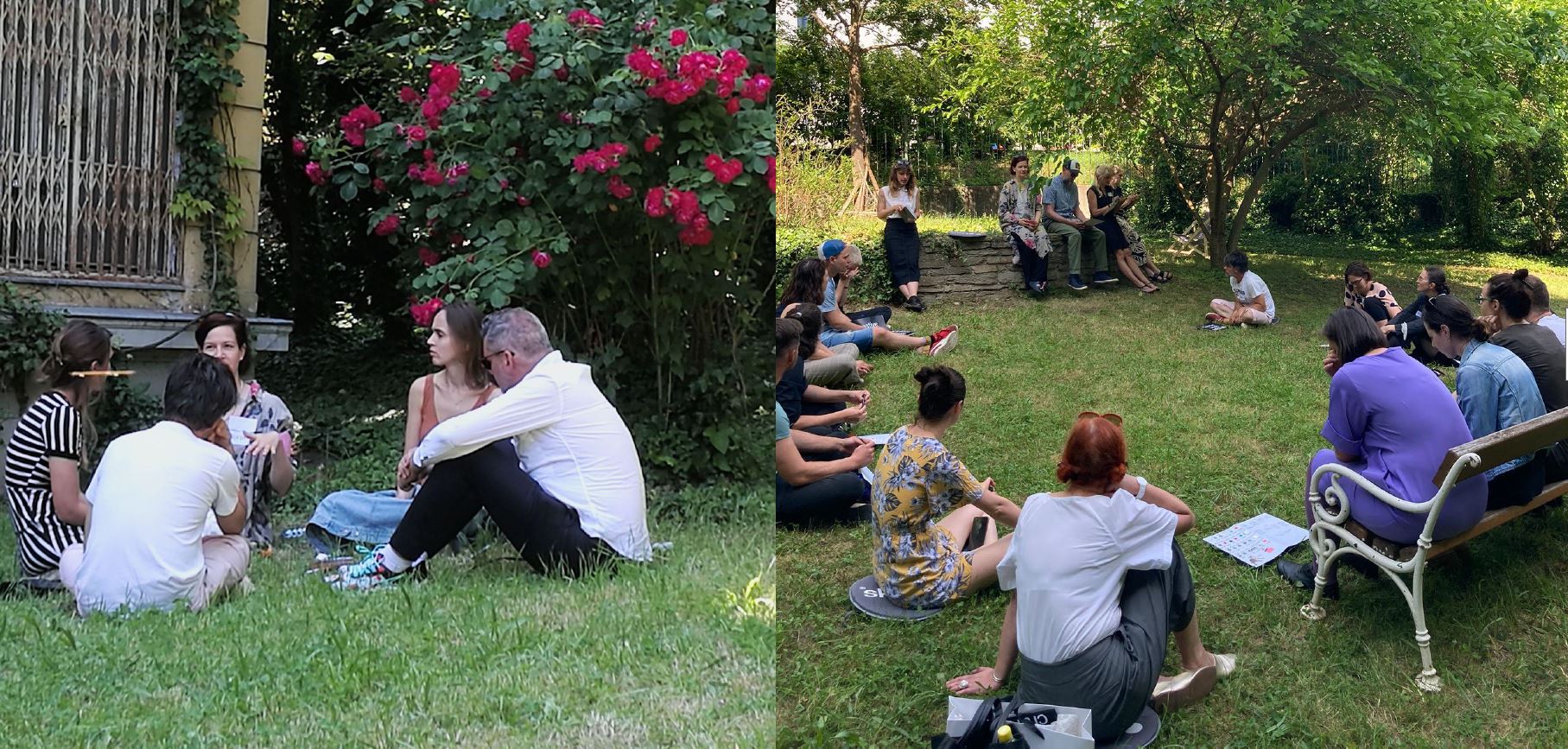 Educators generate ideas. The toolbox
Educators generate ideas. The toolboxFrom the definitions, ideas come. Here, ideas are portrayed already clustered according to their immediacy and potential application.
Firstly, it is necessary create environmental first-aid course, so that everyone can be at any time educated on what to do with the plan and how to care. In parallel, life-long learning for professionals can be created e.g. for architects, designers and engineers.
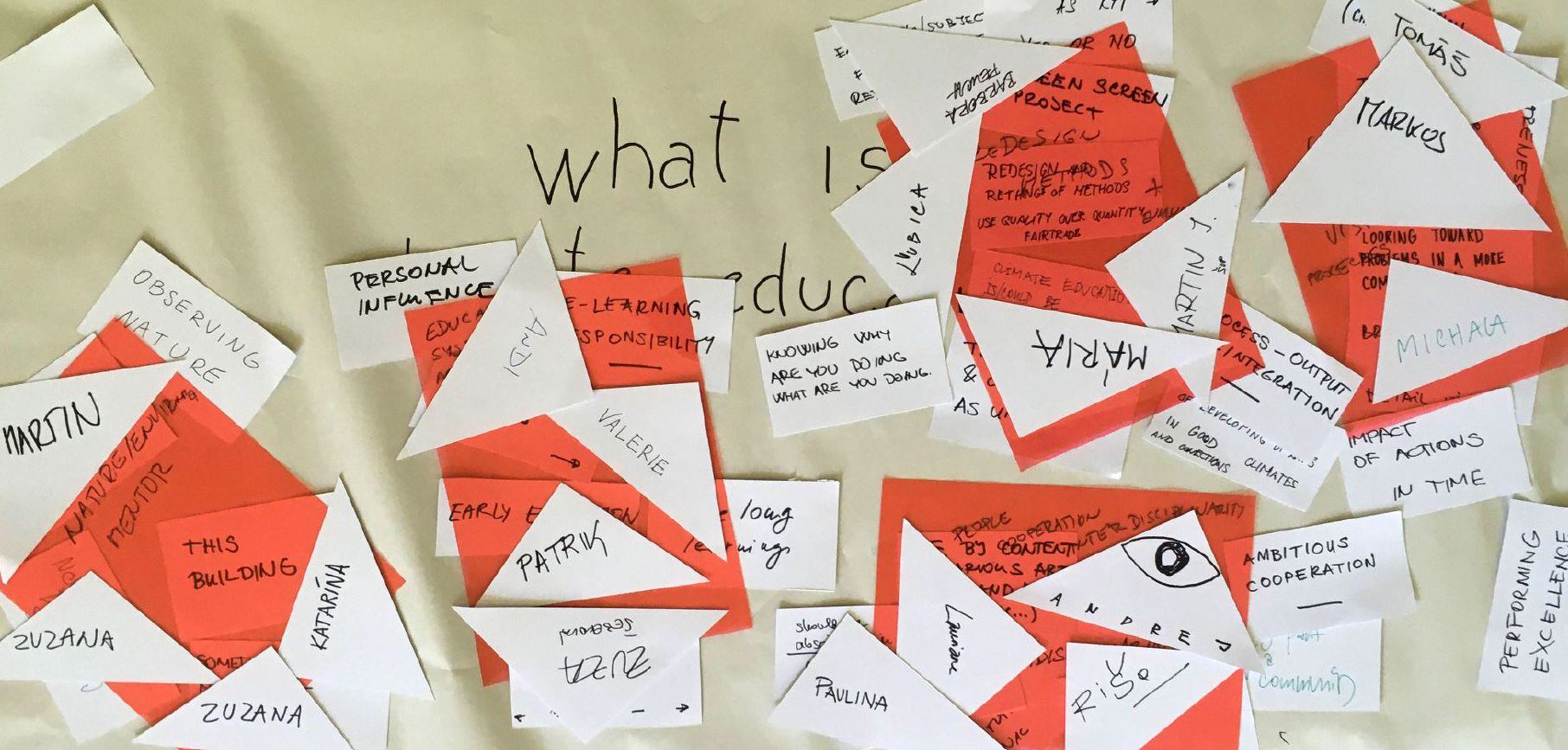
Emotional education and setting up the state of mind regarding climate care is immediately important to redesign education.
Simulations and exchange role between students and teachers or between professionals in different field can contribute to interdisciplinary understanding and support future collaboration.
Generative ideation and co-creation can help to use complexity (following wicked-problems). What is crucial is to try to transfer experience.
In the mid-range schedule, the building of villa can be understood as a safe space to experiment thoughts and solutions, and such spaces should pop up at other spaces.
Environmental civil service as an innovation can serve as a complementary feature for future generations to dedicate some time to intense work for environment, similar to military service (it is necessary to defend, right?).
When redesigning methods, educators propose future studies – as all disciplines at school starts from prehistoric times and rarely has enough time to explain why we are in need to care about climate in present times. To compliments, all the studies should have fun and experiential elements.
When supporting communication and collaboration visual and haptic tools can contribute to international teams overcome language barriers and interdisciplinary misunderstandings. In long term, learning from nature group proposed experiential visits world-wide (to see naked reality) and learn from nature.
Cooperation and collaboration team proposed virtual reality simulations (to bridge interdisciplinary boundaries). Further the “do-undo” button in learning should underline responsibility of actions with regards to climate for students and teachers.
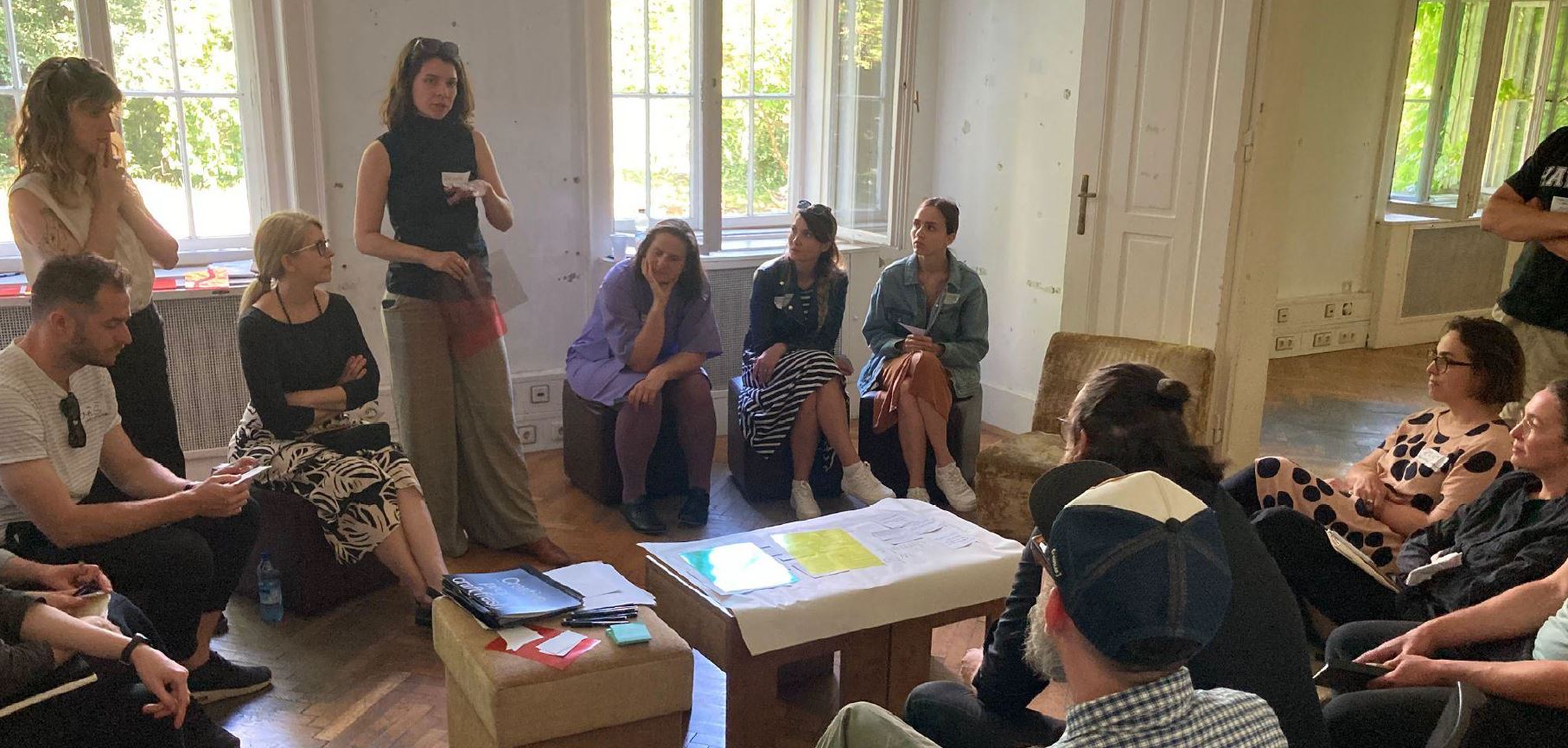 Formulating common language of humans and more-than human world regarding complex information systems would in long term help to bring a more holistic approach in solutions.
Formulating common language of humans and more-than human world regarding complex information systems would in long term help to bring a more holistic approach in solutions.
Tools are ideated to inspire educators as individuals and collectives for further collaboration. Each of them now need to think, what to do to prototype them and make the next step.
Personalized practical proposals for collaborations were based on the yearbook, a memory tool to take a step further and create priorities for individual implementation.
The yearbooks can be used as inspiration for policy makers with intense challenges that need to be included in further steps. The challenges are organized by thematic clustering and by quantity of appearance in participants' yearbooks.
Transfer of knowledge/transfer of experience
The knowledge on climate is not universal. The transfer of knowledge and transfer of experience should have methodological support in education systems. Also learning from this workshop should be transferred to educators’ institutions.
Production – implementation costs
Finance and time to dedicate to the topic and transformation in immediate action should be compensated.
Get a mindset of do/undo
General creative mindset is to produce (ideas, solutions). Climate, however, needs us to take back something we did, and unlearn some of our paths.
Lifelong learning and mandatory re-education
In process of climate care, there is a necessity to change attitudes of practitioners. Lifelong learning should be mandatory and lead to a change of practices.
Fun and joy
Learning and education does not necessarily need to be heavy. A positive attitude makes us learn fast and flexible.
Test/implement in education
Those who have access to learning should be able to test methodologies immediately in practice.
Underline global_local aspects
International collaboration and local collaboration should be involved.
Understand moral and value impacts
Climate care is part of value system, it is important to work with values in education.
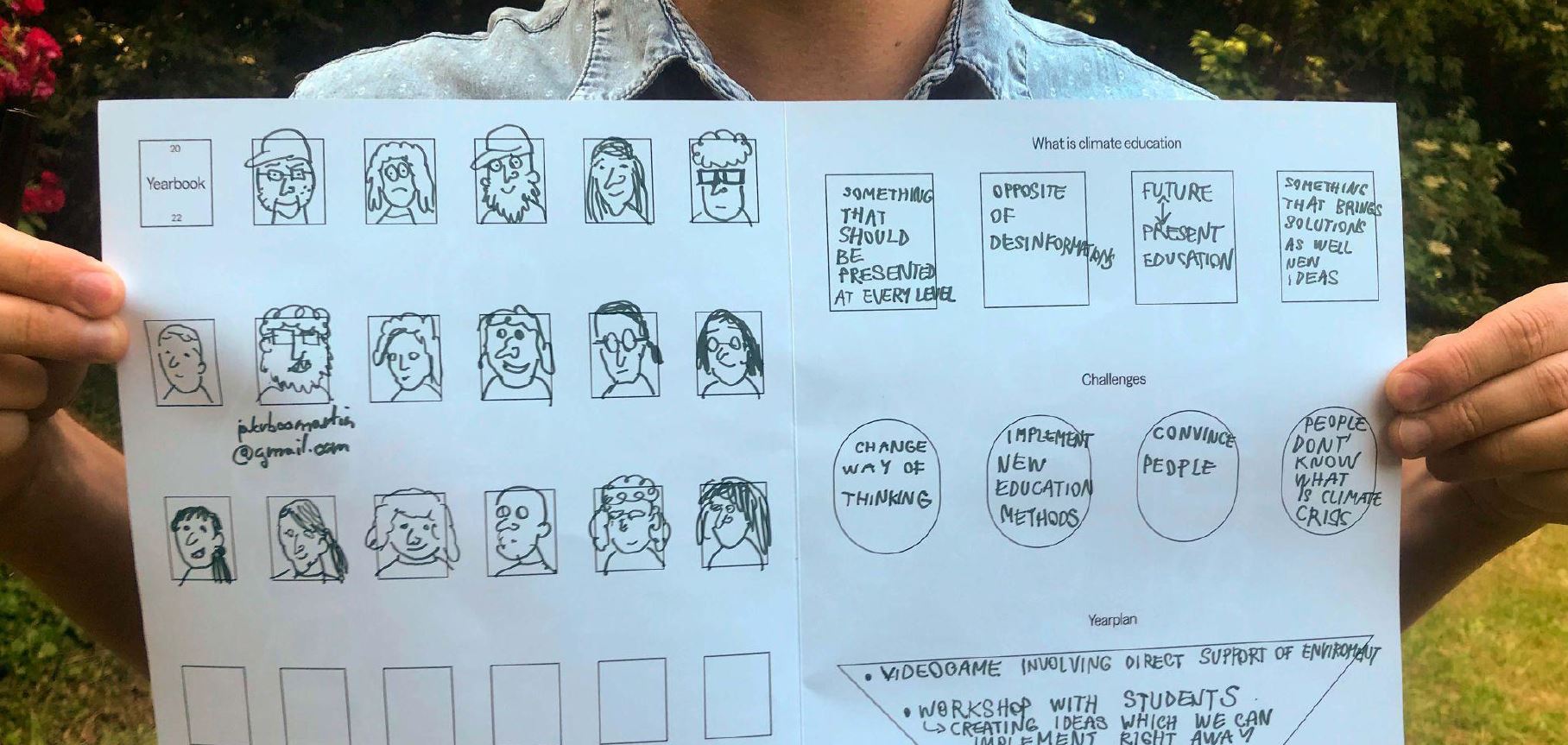
After joyfully having elaborated together the contents, the plan is here. All plans are common and individual at the same time. Those involved will reach out for help and connect to the others for collaboration.
Transfer of knowledge
Try to learn and exchange with other fields. Share knowledge with students and co-create solutions that can be implemented right away. Plan a cooperation workshop. Re-elaborate goals of climate care in our own practice. Make influence on school authorities. Call people who can enrich and ensure the goal to collaborate.
Design new learning tools
When testing solutions, include interdisciplinary use. Make impact and make students experience it. Design learning experience. Re-think students’ plan and make new learning activities.
Create games and joyful methodologies
Design alternatives filling with happiness. Organize learning that includes fun and joy. Create safe space for experiment. Make games, including videogames. Use experience and organize experience in learning (Radical experience travel agency). Make climate first-aid kit.
Work with complexity
Make complexity tangible. Include interdisciplinary hybrid thinking. Connect the dots of various disciplines in learning.
Participate in life-long learning
Implement professional learning with chambers and non-formal institutions and clubs.
Implement climate care in ongoing projects (including the Year of Climate Care)
Each next film will be green. Run projects that we have with a climate care attitude. Participate in Year of Climate Care activities.
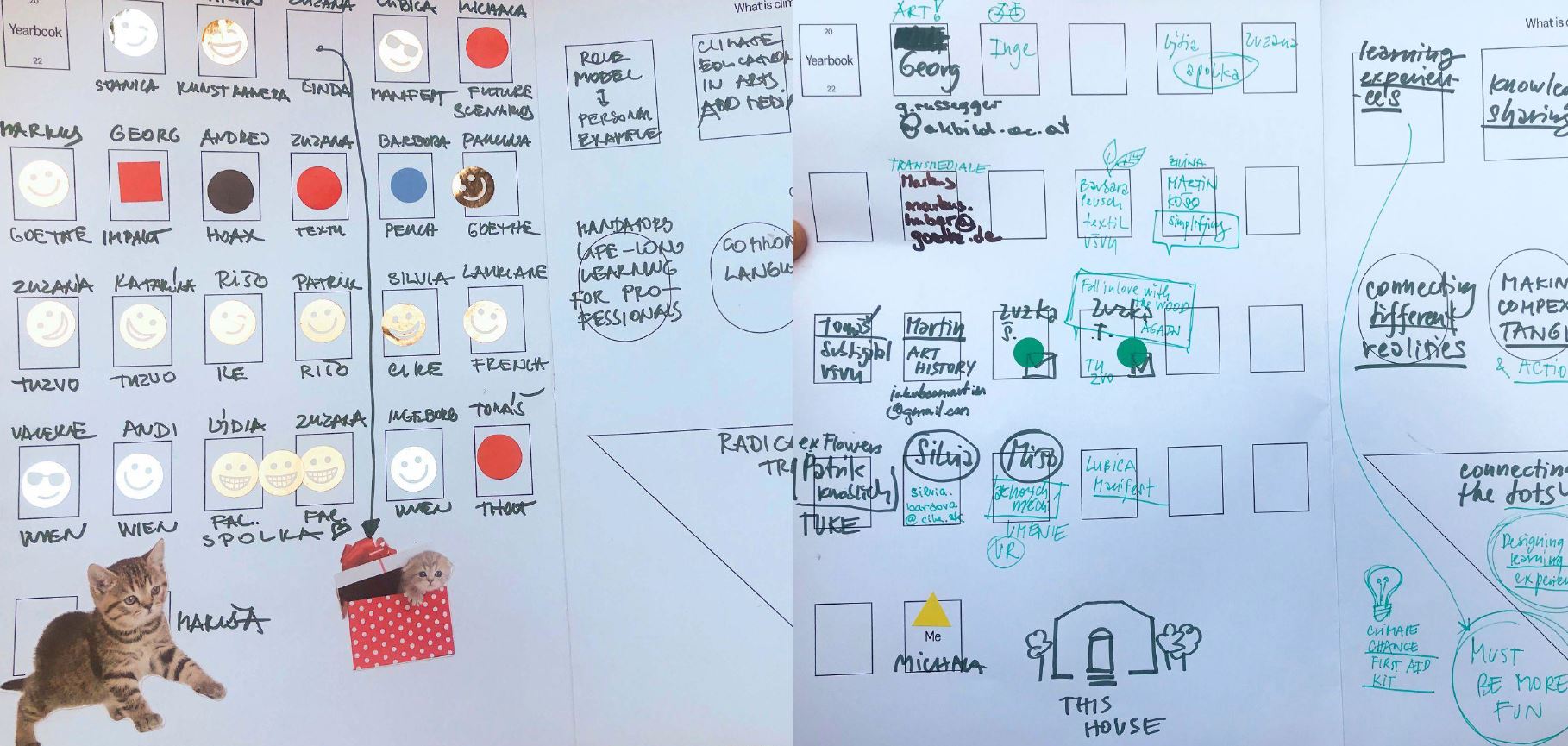
Participants come from:
Michala Lipková | Slovenská technická univerzita v Bratislave (STU) |
Richard Kitta | Technická univerzita Košice (TUKE) |
Patrik Knoblich | Technická univerzita Košice (TUKE) |
Tomáš Tholt | Vysoká škola výtvarných umení v Bratislave (VŠVU) |
Zuzana Šebeková | Vysoká škola výtvarných umení v Bratislave (VŠVU) |
Barbora Peuch | Vysoká škola výtvarných umení v Bratislave (VŠVU) |
Andrej Kolenčík | Vysoká škola výtvarných umení v Bratislave (VŠVU) |
Zuzana Tončíková | Technická univerzita vo Zvolene |
Katarína Csúzová | Technická univerzita vo Zvolene |
Andreas Ferus | Akademie der bildenden Künste Wien |
Valerie Lange | Akademie der bildenden Künste Wien |
Ingeborg Erhart | Akademie der bildenden Künste Wien |
Martin Jakubčo | Škola umeleckého priemyslu Josefa Vydru v Bratislave |
Martin Krištof | Stanica Žilina-Záriečie |
Silvia Bárdová | Creative Industry Košice (CIKE) |
Zuzana Duchová | Nasuti Festival / YCC |
Ľubica Šimkovicová | Manifest 2020 / Inštitút pre pasívne domy |
Mária Beňačková Rišková | YCC / Manifest 2020 |
Zdenka Pepelová | Slovenské centrum dizajnu |
Lauriane Chanel | French Institute Bratislava |
Paulina Rack | Goethe-Institut Bratislava |
Markus Huber | Goethe-Institut Bratislava |
Georg Russegger | Akademie der bildenden Künste Wien |
Lýdia Grešáková | Spolka |
Zuzana Révészová | Spolka |
Workshops/Unconference facilitators:
Lýdia Grešáková and Zuzana Révészová (Spolka)
Georg Russegger (Impact Academy, Academy of Fine Arts Vienna)
Organized by Impact Academy (Academy of Fine Arts Vienna), Manifest 2020, Slovenská komora architektov in collaboration with Slovenské centrum dizajnu and Inštitút pre pasívne domy
Production collective: Georg Russegger, Mária Beňačková Rišková, Ľubica
Šimkovicová, Nora Vranová in collaboration with Zdenka Pepelová and Gabriela Rybáriková
Photos by: Spolka, Mária Beňačková Rišková, Georg Russegger, Goethe Institute (2022)
Part of the project Year of Climate Care
The project is organized under the auspices of the President of the Slovak Republic, Zuzana Čaputová.
More info:
Publikované June 23rd, 2022